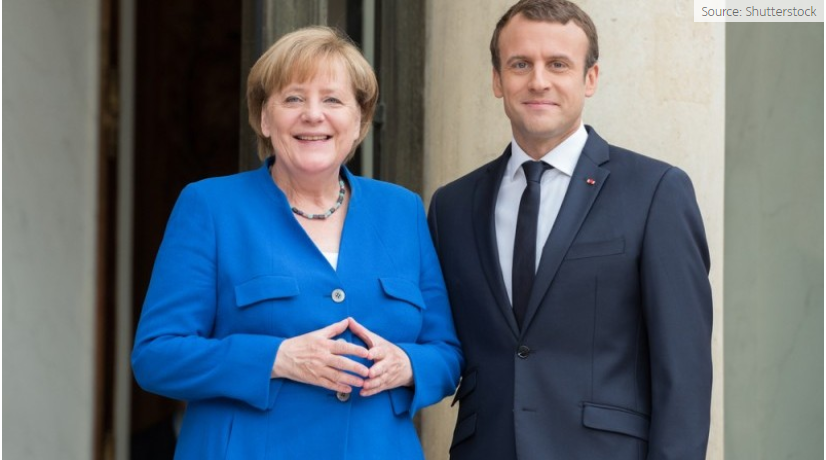EU-topmødet i sidste uge nåede ikke til enighed om en ny EU-fond for de mest coronaramte lande, men der ventes mere konkrete skridt i juli. ABN Amro tror, at der kommer dramatiske ændringer, ikke bare efter krav fra de fire sparelande med bl.a. Danmark. Det er ikke indregnet af markedet, konstaterer banken. Fonden bliver udvandet, og midlerne fra fonden bliver nok delt fifty-fifty mellem direkte tilskud og lån.
Uddrag fra ABN Amro:
Global Daily – Markets have not factored Recovery Fund risks
Euro Macro & Rates: European Recovery Fund likely to see significant changes – Last Friday’s European Council meeting did not reach an agreement, but was serving as a starting point for in-depth discussions between the Council’s President Charles Michel and EU-leaders over the coming weeks. We think a final agreement is still far away, as more and more Member States appear to have reservations about specific aspects of the EC’s plan.
Proportion grants versus loans and allocation key amongst main sticking points – Whereas the southern EU countries, backed by Germany, stress the importance of a resolute agreement on a Recovery Fund with a significant grant component, the Frugal Four, accompanied by Finland, will reiterate tomorrow that they want to see the grant component reduced, or even removed, as the Netherlands prefers.
As well as the discussion about the proportion of grants versus loans, a discussion about the allocation key has also broken out. Whereas the EC’s allocation key is based on population, GDP per capita and the average unemployment rate from 2015 to 2020, reflecting a Member State’s capability to get out of the crisis, multiple EU-leaders argue that the distribution of funds should instead reflect the direct economic consequences of the Covid-19 outbreak, reflected by the subsequent decrease in real GDP, possibly complemented by the rise in unemployment.
Besides those two fundamental issues, the EC’s proposal entails more stumbling blocks. Multiple Member States criticize the creation of ‘new own resources’. Meanwhile, Poland announced it finds it unacceptable to use expanded revenues from the Emission Trading System to repay the EU’s borrowed funds, as desired by the EC, as it would be a big hit to Poland’s economy, which is heavily dependent on coal.
Also, the bloc of eastern European countries objects to the skew of funds to the south, despite the eastern bloc being relatively less wealthy. Highlighting the different interests of Member States, these examples underline that the discussion on the shape of the MFF and the European Recovery Fund will be a lengthy one.
Allocation key based on Covid-19-related hit to real GDP dramatically changes dynamics – We expect the final Recovery Fund to look significantly different in terms of size and allocation. With the Frugal Four and Finland sticking to their standpoints, we continue to expect the Recovery Fund to be watered down, and to consist of a more even split between loans and grants.
Moreover, with at least 12 Member States, amongst which the Netherlands, Denmark, Austria, but also Belgium, Ireland and Czech Republic, opposed to the allocation key in its current shape, we deem it highly likely that the final allocation key will look drastically different.
For example, an allocation key based on the change in expected 2020 real GDP between the EC’s Autumn and Spring Economic Forecast, would turn Ireland and France from net contributors into net receivers, whereas Portugal would turn from a net receiver into a net payer. Also Italy and Poland would have their allocation significantly reduced.
We expect recent rally in spreads on the back of Recovery Fund proposals to be partly reversed – Spreads across the eurozone have tightened significantly in response to the Franco-German and EC proposals, with the strongest spread compression across the periphery. We judge that about half of this spread tightening across the eurozone will be reversed, as we expect the final Recovery Fund to be significantly watered down.
Moreover, we expect there will be multiple disappointments in markets over the summer, as it may take at least several months to get closer to an agreement, resulting in increased spread volatility driven by the Recovery Fund discussion over the next months. With the short-end of peripheral bond markets supported by TLTRO carry trades (see below), this sets the scene for a steepening of peripheral curves. Finally, within this general trend, a changed allocation key could see the government bonds of Portugal and Italy being punished the most, while those of Ireland and France could see more resilience. (Floortje Merten)
Euro Financials: TLTRO smashes records – The ECB announced that eurozone banks took EUR 1.31 trillion in funding, under most recent round of the central bank’s support programme, the TLTRO. This adds EUR 549bn of extra liquidity to the eurozone banking sector.
The easing of TLTRO conditions for the latest round of funding – in combination with the existing higher market funding rates and increased corporate lending – has led to an enormous take up by eurozone banks. The results today are broadly in line with our expectations – which were at EUR 1.4trn.
To put the numbers into context, today’s take up is equivalent to a full periphery use of their TLTRO allowance (EUR 887bn minus current holdings), and roughly a 35% usage of TLTRO allowance (EUR 700bn) for non-periphery eurozone banks. As such, it is the involvement of the non-periphery banks in this round that has been the game changer in terms of uptake, when compared to previous TLTRO rounds.
Non-periphery banks – which are usually not that active in the programme – have been lured by the new very generous conditions that are available. Meanwhile, the latest round of TLTRO is not simply being used as a funding source but as an excellent opportunity to enhance profitability. Banks in the core could park some funds in the deposit facility to pick-up a carry, while we could well see peripheral banks using some of the funds to invest in the short end of their sovereign curves.
Indeed, banks in the periphery have continued to demand heavy amounts to make use of their recently increased allowance. The TLTRO 3.4 settlement is next week, on 24 June.








